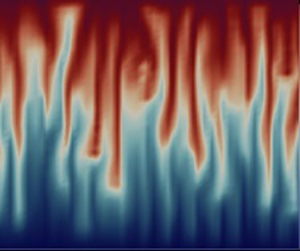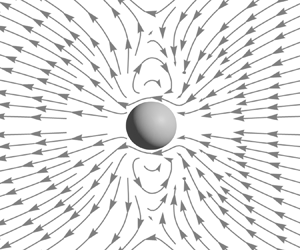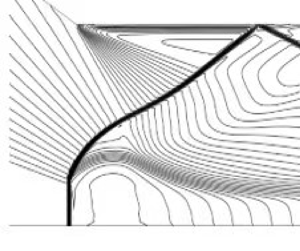Refine listing
Actions for selected content:
1417033 results in Open Access
Replies to commentators
-
- Journal:
- Economics & Philosophy / Volume 40 / Issue 2 / July 2024
- Published online by Cambridge University Press:
- 27 March 2024, pp. 507-511
-
- Article
-
- You have access
- Open access
- HTML
- Export citation
Redes de afiliaciones socioculturales en El Tintal, Petén, Guatemala: Una perspectiva desde la cerámica
-
- Journal:
- Ancient Mesoamerica / Volume 35 / Issue 2 / Summer 2024
- Published online by Cambridge University Press:
- 27 March 2024, pp. 538-561
- Print publication:
- Summer 2024
-
- Article
- Export citation
A Real-World Study of Nusinersen Effects in Adults with Spinal Muscular Atrophy Type 2 and 3
-
- Journal:
- Canadian Journal of Neurological Sciences / Volume 52 / Issue 1 / January 2025
- Published online by Cambridge University Press:
- 27 March 2024, pp. 119-128
-
- Article
- Export citation
What Is Sexual Intimacy?
-
- Article
-
- You have access
- Open access
- HTML
- Export citation
DISCUSSION: PRESENTATION OF ATMOSPHERIC 14CO2 DATA
-
- Journal:
- Radiocarbon / Volume 66 / Issue 2 / April 2024
- Published online by Cambridge University Press:
- 27 March 2024, pp. 386-399
- Print publication:
- April 2024
-
- Article
-
- You have access
- Open access
- HTML
- Export citation
EMPEDOCLES IN CONTEXT - (R.) Saetta Cottone Soleil et connaissance. Empédocle avant Platon. Pp. xvi + 294, figs. Paris: Les Belles Lettres, 2023. Paper, €25.50. ISBN: 978-2-35088-203-1.
-
- Journal:
- The Classical Review / Volume 74 / Issue 2 / October 2024
- Published online by Cambridge University Press:
- 27 March 2024, pp. 400-401
- Print publication:
- October 2024
-
- Article
- Export citation
Raw-material exploitation in the Earlier and Middle Stone Age in the Eastern Desert of Egypt: evidence from Wadi Abu Subeira
-
- Article
-
- You have access
- Open access
- HTML
- Export citation
Generalized second order vectorial ∞-eigenvalue problems
- Part of
-
- Journal:
- Proceedings of the Royal Society of Edinburgh. Section A: Mathematics , First View
- Published online by Cambridge University Press:
- 27 March 2024, pp. 1-21
-
- Article
-
- You have access
- Open access
- HTML
- Export citation
Constrained optimal stopping under a regime-switching model
- Part of
-
- Journal:
- Journal of Applied Probability / Volume 61 / Issue 4 / December 2024
- Published online by Cambridge University Press:
- 27 March 2024, pp. 1220-1239
- Print publication:
- December 2024
-
- Article
- Export citation
On the virtues of neutrality
-
- Journal:
- Religious Studies / Volume 60 / Issue 4 / December 2024
- Published online by Cambridge University Press:
- 26 March 2024, pp. 684-690
- Print publication:
- December 2024
-
- Article
- Export citation
Remembering the Dead: Postmortem Guild Membership in Late Medieval England
-
- Journal:
- Journal of British Studies / Volume 63 / Issue 2 / April 2024
- Published online by Cambridge University Press:
- 26 March 2024, pp. 323-348
-
- Article
-
- You have access
- Open access
- HTML
- Export citation
Effect of gravity settling on the onset of thermal convection in a nanofluid-saturated porous medium layer
-
- Journal:
- Journal of Fluid Mechanics / Volume 984 / 10 April 2024
- Published online by Cambridge University Press:
- 26 March 2024, A5
-
- Article
- Export citation
Trinity, simplicity, and contradictory theology: a theologian's reflections
-
- Journal:
- Religious Studies / Volume 60 / Issue 4 / December 2024
- Published online by Cambridge University Press:
- 26 March 2024, pp. 699-705
- Print publication:
- December 2024
-
- Article
- Export citation
Bicuspidisation of unicuspid stenotic pulmonary valve in a nine-year-old male
-
- Journal:
- Cardiology in the Young / Volume 34 / Issue 5 / May 2024
- Published online by Cambridge University Press:
- 26 March 2024, pp. 1153-1155
-
- Article
-
- You have access
- Open access
- HTML
- Export citation
#BringBackOurGirls: Transnational Activism and the Remediation of the 2014 Chibok Girls’ Kidnapping in Nigeria
-
- Journal:
- African Studies Review / Volume 67 / Issue 2 / June 2024
- Published online by Cambridge University Press:
- 26 March 2024, pp. 295-320
-
- Article
-
- You have access
- Open access
- HTML
- Export citation
Empowering Digital Democracy
-
- Journal:
- Perspectives on Politics / Volume 22 / Issue 3 / September 2024
- Published online by Cambridge University Press:
- 26 March 2024, pp. 819-835
- Print publication:
- September 2024
-
- Article
-
- You have access
- Open access
- HTML
- Export citation
The propulsion direction of nanoparticles trapped in an acoustic field
-
- Journal:
- Journal of Fluid Mechanics / Volume 984 / 10 April 2024
- Published online by Cambridge University Press:
- 26 March 2024, R1
-
- Article
-
- You have access
- Open access
- HTML
- Export citation
Probabilistically coherent credences despite opacity
-
- Journal:
- Economics & Philosophy / Volume 40 / Issue 2 / July 2024
- Published online by Cambridge University Press:
- 26 March 2024, pp. 497-506
-
- Article
-
- You have access
- Open access
- HTML
- Export citation
Diagonal decision theory
-
- Journal:
- Economics & Philosophy / Volume 40 / Issue 2 / July 2024
- Published online by Cambridge University Press:
- 26 March 2024, pp. 485-496
-
- Article
-
- You have access
- Open access
- HTML
- Export citation
Reflection of a centred compression wave
-
- Journal:
- Journal of Fluid Mechanics / Volume 984 / 10 April 2024
- Published online by Cambridge University Press:
- 26 March 2024, A3
-
- Article
- Export citation











